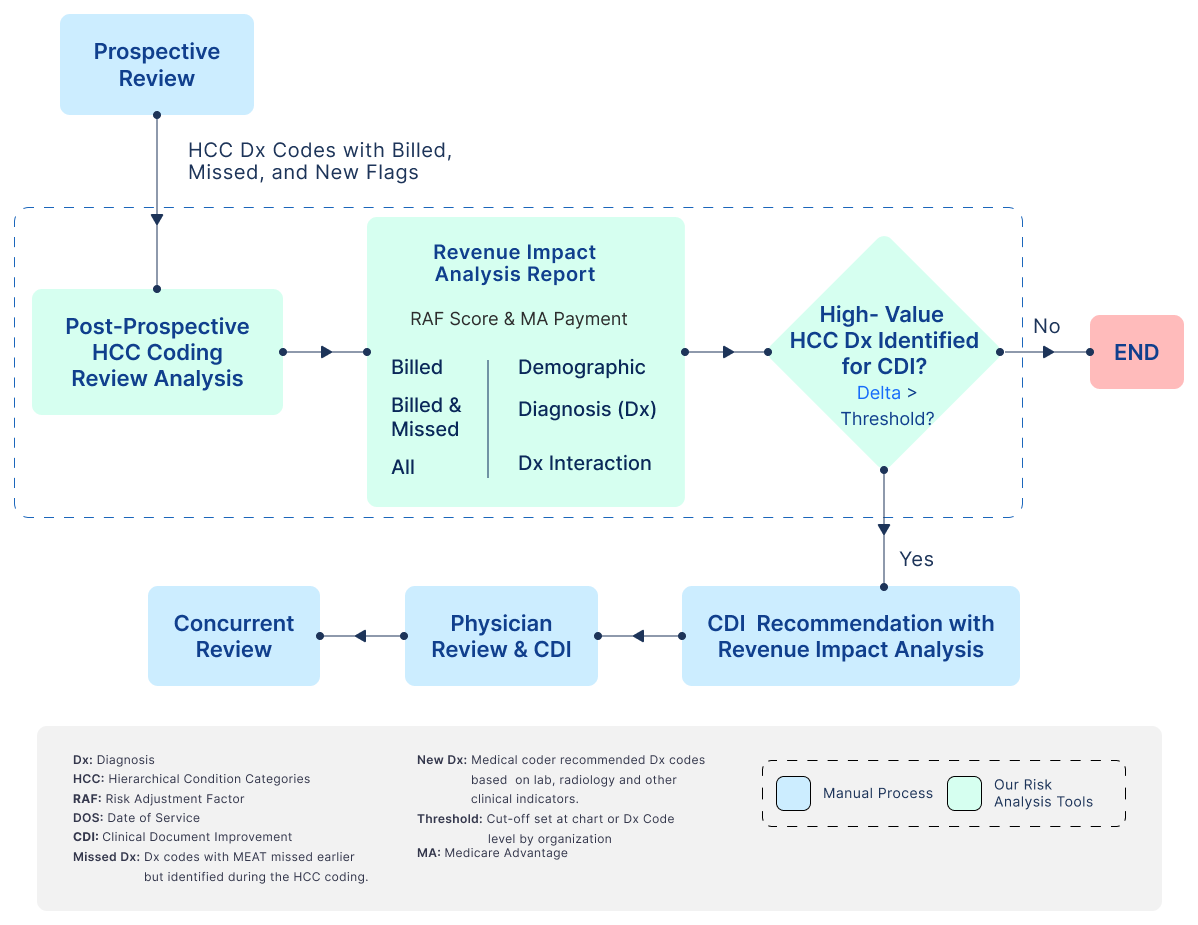Learn how to use HCC RAF Score tools and Get started.
Use Case #1 for our HCC RAF Score Tools
Gain Physician Support for Clinical Document Improvement (CDI) in Risk Adjustment Coding by consistently choosing high-value charts and prioritizing high-value diagnosis codes
Problem:
Risk Adjustment coders are responsible for reviewing patient charts and capturing Billed, Missed, and New Diagnosis (Dx) codes, along with supporting medical evidence for Hierarchical Condition Category (HCC) conditions. Typically, Missed and New Dx Codes undergo physician review for Clinical Documentation Improvement (CDI). However, when these reviews do not result in a substantial increase in revenue, physicians may lose motivation to continue engaging in CDI recommendations. Lack of physician engagement in CDI specifically for Risk Adjustment is a prevalent issue within the healthcare industry.
Our Solution:
Our innovative tools are designed to meticulously analyze each International Classification of Diseases (ICD) code, determining whether CDI gaps have a significant revenue impact. Moreover, our solution assists in prioritizing ICD codes based on their potential for low or high revenue impact. Our tool utilizes non-personal Health Information (PHI), demographic, and diagnosis data, incorporating risk models and factors to generate the Risk Adjustment Factor (RAF) Score and Medicare Advantage (MA) payment predictions.

By assessing the potential revenue benefits and aligning them with the organization s revenue thresholds, medical coders can make informed decisions about whether to drop from sending specific chartsICD codes to physicians or forward the charts to physicians for clinical document improvement. This approach optimizes the CDI process and ensures a more efficient utilization of physician time.
Benefits:
-
ICD Analysis:
Our tools analyse each ICD used in clinical documentation
-
Identifying Revenue Impact:
The tools identify whether the CDI gaps related to specific ICDs have a direct impact on revenue.
-
Prioritization:
Once revenue impact is determined, our tools categorize ICD codes based on whether they will have a low or high revenue impact
-
Quick Decision Making:
Armed with revenue impact data, medical coders can make quick decisions if they should ignore ICDs with low revenue impact or forward the chart to improve the clinical documentation for high-revenue impact diagnosis codes
-
Efficient use of Physician Time:
The Physician will not get every chart with missed andor new diagnosis codes)
-
Physician Engagement:
Looking at the CDI efforts resulting in revenue, physicians will start trusting CDI recommendations from Medical coders and will act on them
Our Tools:
- HCC RAF Score Analysis Post-Prospective
- HCC RAF Batch Scoring Post Prospective
- HCC RAF Score REST API
Watch the step-by-step HCC Medicare RAF Score Tools Video Demos.
Learn about 5 important use cases where HCC RAF Score tools can be used.

